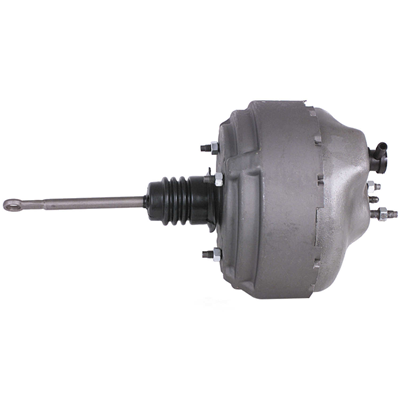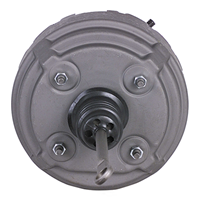0) BRAKE BOOSTER
Item #:
83624290
Product Info
5473112
A1 CARDONE
0) BRAKE BOOSTER
Cardone 5473112 Power Brake Booster
CARDONE Remanufactured Vacuum Brake Boosters, Hydro-Vac Boosters, and Hydraulic Boosters, offer your vehicle reliable stopping performance, every time. Each unit is reverse engineered, based off 40 years of CARDONE Engineering expertise, where original design weaknesses are identified, corrected and where applicable upgraded to provide a more durable part then the original unit. Every unit is remanufactured to meet or exceed OEM performance, providing a quality product both you and your vehicle rely on.
| Package Dimensions | 9.750 x 9.875 x 23.125 inches |
| Package Weight | 11.14 lb |
| Package Quantity | 1 |
| UPC | 082617147972 |
| Booster Type | Vacuum |
| Brake Pedal Rod Extension Included | No |
| Contains Electronic Components | No |
| Does it require SDS | No |
| E-Waste | No |
| FAA A1 | A brake booster assists in pushing the master cylinder piston when the brakes are applied. This multiplies pedal force to decrease stopping distances. |
| FAA A10 | The most common way to identify the brake booster is by the vehicle application. However, most brake boosters have a pedal rod identification number stamped on the end of the rod. This can helpful in identifying the correct replacement brake booster. |
| FAA A2 | For proper functionality, a brake booster will need a consistent supply of 18-21 inches of vacuum. |
| FAA A3 | With the engine off, pump the brake pedal until it feels firm and hold. Then, start the engine and the pedal will sink slightly if the booster is operating properly. |
| FAA A4 | Fuel and oil vapors can enter the vehicle’s PCV system. These vapors will prematurely deteriorate the brake booster’s internal diaphragm. |
| FAA A5 | After replacing a brake booster, it may be necessary to adjust the brake light switch. Some vehicles contain a one-time use brake light switch. In these cases, the brake light switch will need to be replaced. |
| FAA A6 | No, brake boosters are application specific. Most will have different master cylinder and firewall mounting spreads. |
| FAA A7 | Brake pedal free play is a measurement of how far the brake pedal moves before the master cylinder first begins engagement. Some vehicles will require an adjustment. Please refer to your vehicle’s service manual. |
| FAA A8 | This is due to a failing master cylinder piston seal. This will result in brake fluid entering and contaminating the brake booster. The master cylinder and brake booster will need to be replaced. |
| FAA A9 | A common cause is a restricted vacuum hose. If the vacuum line is free flowing, there could be more extensive engine damage or wear. Engine vacuum also fluctuates based on altitude. Please refer to the O.E. specification for your vehicle. |
| FAQ Q1 | What does a Brake booster do? |
| FAQ Q10 | How can I identify my brake booster? |
| FAQ Q2 | How much vacuum does a brake booster need? |
| FAQ Q3 | How can I test my brake booster for proper functionality? |
| FAQ Q4 | What causes multiple booster failure? |
| FAQ Q5 | Why do my brake lights remain illuminated after installing my replacement brake booster? |
| FAQ Q6 | Can I use a brake booster from a different application? |
| FAQ Q7 | What is brake pedal free play? |
| FAQ Q8 | Why is fluid present between my master cylinder and brake booster? |
| FAQ Q9 | Why do I have less than 18 inches of vacuum supplied to my brake booster? |
| Housing Diameter | 223.39 mm |
| Housing Material | Steel |
| Is Item A Chemical | No |
| Is Or Contains A Battery | No |
| Is Or Contains A Bulb | No |
| Is Prop Sixty Five Affected | No |
| Is the item CARB affected | No |
| Master Cylinder Included | No |
| Master Cylinder Stud Thread Size | 3/8x16 |
| Mounting Bracket Included | No |
| Mounting Hardware Included | No |
| Neck Seal Included | Yes |
| Package Contents | Booster; Instruction Sheet |
| Product Condition | Remanufactured |
| Stud Thread Size | 3/8x16 |
| Country of Origin | MX |
| Interchanges |
|
Call for Pricing
In Stock
UOM : EA
QTY:




